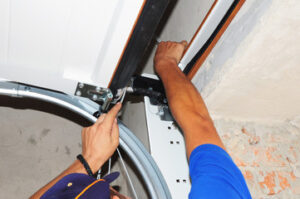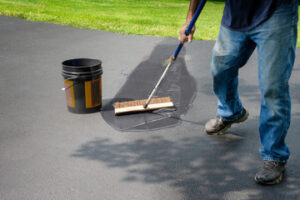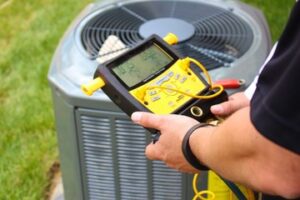Pomskies have exploded in popularity in recent years, making them one of the most sought-after designer dog breeds. They’re playful, intelligent, and adaptable dogs that are easy to train.

Pomsky inherits their appearance and personality traits from their parents. They can resemble either of their parents, and even siblings from the same litter may vary in appearance.
As with any crossbreed, Pomskies can vary in physical appearance. The fawn or tan coat of the Siberian Husky is often replaced with the more traditional white coat of the Pomeranian, while some have a mix of both of these colors in their fur. Their eyes can be a variety of colors including blue, brown, hazel, or amber. Their tails may be rolled over, upright, or brushed in a bushy fashion.
While the Pomsky is a relatively new breed, it has quickly gained popularity and become one of the most sought-after designer dogs on the market. It’s important to remember that while these puppies are extremely cute, it’s not wise to get a dog simply because it has a cute face. These puppies require a lot of care and attention to meet their needs, and they should only be bred when you are ready for that commitment.
The initial rise in popularity of the pomsky was sparked by several pictures that started appearing online, and in particular, on social media. These pictures began with a dog named Mya who was posted to an Instagram account and gained 11,000 followers overnight. Soon after, other pomskies like Norman and King Collins made their way into the spotlight as well. This surge in interest prompted some breeders to start breeding these pups and creating actual Pomsky litters.
These puppies can inherit many of the positive traits that their parents have to offer, including their intelligence, playful personality, and self-assured demeanor. However, they can also acquire some undesirable traits from their parent breeds. For example, both Huskies and Pomeranians can be yappy dogs. As a result, it’s important to socialize a Pomsky puppy from an early age so that they learn how to control their barking.
While these pups are highly intelligent, they can be stubborn at times and can struggle to obey commands, especially if they aren’t properly trained. As a result, it is crucial that you work with your pomsky and give them plenty of positive reinforcement during training sessions. It’s also important to give them a high-quality diet that is free of fillers and artificial ingredients.
Exercise
Pomskies are active dogs with a lot of energy. They need regular physical exercise to keep their mind and body occupied, which can prevent boredom and destructive behaviors like chewing or digging. Daily walks, play sessions, and agility training are all great ways to get your pomsky’s energy out.
As with all dogs, each Pomsky has a unique set of needs that should be addressed with consistency and patience. These intelligent pups are quick learners and respond well to positive reinforcement, but they must be taught to control their impulses and learn basic obedience commands. Obedience training classes provide a consistent environment and structure that help your pomsky develop self-control and learn to follow your lead.
In addition to physical exercise, a Pomsky’s mind also requires stimulation to keep it occupied and focused. Puzzle toys and scent work are both excellent ways to engage your Pomsky’s intellect. In-home obstacle courses that allow your dog to jump over, duck under, and go through barriers are another fun way to challenge their mental and physical agility.
A Pomsky’s energy levels should be assessed on a daily basis, as they can become overexcited and act out if they are not physically or mentally tired. A good way to assess your Pomsky’s energy level is by using a energy meter, which goes from 1 up to 10. When your pomsky reaches a level of 2 or 3, this means they are in a calm state and have some pent-up energy that can be burned off with physical or mental exercise.
If your pomsky continues to show signs of being overexcited, such as a lack of focus during training or excessive whining, you may need to seek professional guidance from a trainer or behaviorist. This can help you establish yourself as the pack leader and teach your pomsky to manage their emotions in a more appropriate manner.
Regular grooming is also important for a Pomsky’s health. These dogs have a thick double-layered coat that requires weekly brushing with a slicker brush or comb to prevent matting and tangles. They also require regular nail trims to avoid overgrown nails and regular ear cleaning to prevent infections.
Training
Pomskies are intelligent dogs that adapt well to training. They can be stubborn though like their parent breeds, and are best trained at a young age. They are also active dogs that need plenty of exercise and can benefit from teaching a variety of tricks.
The first thing you should do is learn to train your pomsky to follow your commands and be calm on walks. This is a crucial step in training and will help make the process much easier for both you and your dog. Another important part of training is to teach your pomsky to respect you as the pack leader. This is essential to a happy and healthy dog and will prevent them from acting out or getting too excited over minor things.
Once you have your pomsky’s obedience and basic commands down, it is time to start working on more advanced training. This includes tricks and more complex commands. It is best to teach your pomsky these new skills in a small area like a backyard or a dog park, so that they can practice without being distracted by other dogs and people.
If you want to learn how to train your pomsky to do tricks or other advanced skills, it is best to find a professional dog trainer that can work with this hybrid breed. These trainers are usually familiar with the Pomeranian and Husky, and know how to communicate with them effectively. They can also provide you with the tools you need to properly train your pomsky, including a training guide.
During the early stages of training, it is important to keep your pomsky on leash at all times. This will prevent them from running off to do their business and reversing your hard work. It will also allow you to correct their behavior quickly if they get too overly excited or aggressive.
One of the most common mistakes that dog owners make is trying to train their Pomsky when they are at a high energy level. This could be as low as a 1 on the energy meter or as high as an 8. When your Pomsky gets this rush of adrenalin, they become untrainable.
Health
A Pomsky is a hybrid dog created by the pairing of the Siberian Husky and the Pomeranian. As such, it is a relatively new breed and therefore isn’t as familiar with the common health issues that can affect purebred dogs. However, this doesn’t mean that pomskies are invincible.
Like their parent breeds, Pomskies have a tendency to suffer from respiratory problems and eye conditions. In some cases, these issues can be exacerbated by excessive exercise and environmental factors. To avoid such concerns, it is important for Pomsky owners to take their pet’s health into consideration and follow a regimented exercise routine that promotes joint health without putting unnecessary stress on the bones and muscles.
The Pomsky’s long haired coat can also be prone to shedding and tangling. As a result, regular brushing sessions are required to help prevent these problems. Moreover, a high-quality dog food with added vitamins and minerals can also be helpful in promoting healthy skin and coats.
In terms of skeletal health, pomskies are prone to hip dysplasia and patellar luxation as a result of the larger size differences between their parent breeds. To avoid such health problems, it is important for pomskies to maintain a healthy weight and engage in low-impact exercises that support joint health without causing excess stress on the joints.
As with all dogs, a Pomsky will require regular veterinary check-ups to ensure their well-being and address any potential issues before they develop into serious ailments. In addition, it is recommended that owners consult their vet about spaying or neutering their pets to reduce the risk of certain diseases and unwanted behaviours.
The Pomsky is an intelligent, playful dog that loves to interact with its family members. As such, this breed does best when it is in a home where it will receive plenty of attention and affection. This makes them a good companion for single people, but they can also create a strong bond with children and other pets as well. However, they may not do well with strangers and can become nervous or even aggressive if provoked.








